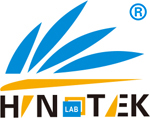Selecting the appropriate biological microscope is crucial for accurate observation, diagnosis, research, and education. With various configurations and features available, our company HINOTEK GROUP LIMITED (www.hinotek.com) will help distributors, importers, and end-users navigate the choices to find the perfect instrument for their specific biological applications.
• What specimens will you analyze? (e.g., Blood smears, tissue biopsies, bacterial cultures, parasites, waterborne organisms, plant cells, cheek cells, live cell cultures in flasks/dishes?)
• What level of detail is necessary? (e.g., Basic cell identification, detailed morphology, detecting specific pathogens, subcellular structures?)
• What observation techniques are essential?
o Brightfield: Standard technique for stained specimens. Requires minimal setup but may lack contrast for unstained samples.
o Darkfield: Enhances contrast for unstained transparent specimens by illuminating them against a dark background. Useful for visualizing organisms like spirochetes.
o Phase Contrast: Ideal for viewing unstained, living cells and transparent specimens by converting phase shifts in light into brightness differences.
o Fluorescence: Required for visualizing specimens labelled with fluorophores; uses specific excitation/emission filters and light sources. Essential in many molecular and cell biology applications.
• Will you be viewing live cells in culture vessels? An Inverted Microscope configuration (objectives below the stage, light source above) is necessary for this.
• Is digital documentation or teaching required? A Trinocular head with a dedicated camera port is essential for microphotography or video.
1. Magnification and Optics
• Total Magnification: Calculated by multiplying the eyepiece magnification by the objective lens magnification (Total Mag = Eyepiece Power x Objective Power).
• Eyepieces (Oculars): Standard magnification is 10x. Widefield (WF) eyepieces will provide a broader view.
• Objective Lenses: Housed in a rotating nosepiece (turret). Typically 3-5 objectives are included. Common powers are:
o 4x (Scanning)
o 10x (Low Power)
o 40x (High Power / High Dry)
o 100x (Oil Immersion – requires immersion oil for highest resolution)
o Typical total magnification range: 40x to 1000x, sometimes extendable up to 1600x.
• Resolution: The ability to distinguish fine details. This is primarily determined by the quality (Numerical Aperture – NA) of the objective lens, not just magnification.
• Objective Lens Quality:
o Achromatic: Standard, corrects for red and green color aberrations. Good for general use.
o Semi-Plan: Provides a flatter field of view over ~80% of the image compared to Achromatic.
o Plan Achromatic (Plan): Offer the flattest field of view across nearly the entire image. Best for photomicrography and critical observation.
o DIN Standard: Ensures objectives are interchangeable between compatible microscopes.
2. Head Type
• Monocular: One eyepiece. Least expensive, suitable for basic use or young students. Can cause eye strain with prolonged use.
• Binocular: Two eyepieces. Significantly more comfortable for extended viewing periods. Standard for most lab work.
• Trinocular: Two eyepieces plus a third vertical port for mounting a camera without interrupting visual observation. Essential for digital imaging, teaching, and collaboration.
3. Illumination System
Biological microscopes almost always use transmitted illumination (light passes through the specimen from below). Key components include:
• Light Source:
o LED: Increasingly standard. Provides bright, cool, white light with long lifespan and low energy consumption. Often intensity-adjustable (rheostat). Some models offer portability with rechargeable batteries.
o Halogen: Offers very bright, white light. Intensity is adjustable, but generates heat and has a shorter lifespan than LED.
o Tungsten: Basic, warm illumination found in older or very entry-level models. Generates heat, shorter lifespan, often not adjustable.
o Fluorescent: Used specifically for fluorescence microscopy techniques.
• Condenser: Focuses light onto the specimen. An Abbe condenser is standard on quality microscopes, offering adjustable height and aperture control for optimizing resolution and contrast.
• Diaphragm: Typically an Iris Diaphragm located within or below the condenser. Controls the angle (aperture) of the cone of light reaching the specimen, critical for adjusting contrast and depth of field. Avoid basic disc diaphragms for serious lab work.
4. Stage and Focusing
• Stage: The platform holding the slide. A Mechanical Stage is highly recommended (and standard on most lab-grade binocular/trinocular models). It allows precise, controlled movement of the slide using X-Y axis knobs, essential for scanning and viewing at high magnifications. Simpler stages may only have clips.
• Focusing Knobs: Separate Coarse Focus (for large movements, initial focusing) and Fine Focus (for small adjustments, sharp focusing) knobs are standard.
5. Configuration
• Upright: The most common configuration, with objectives above the stage.
• Inverted: Objectives below the stage, light source/condenser above. Used for viewing samples from below, primarily live cells in culture vessels.
• Ergonomics: Consider adjustable features like interpupillary distance and diopter adjustment on eyepieces. Binocular heads reduce eye strain. Comfortable placement of focus knobs is also key for long sessions.
• Budget: Biological microscopes range widely in price. Define your budget based on required features (e.g., Plan objectives, fluorescence capability, trinocular head increase cost). Invest in quality optics and construction for reliable performance.
• Immersion Oil: Necessary for using the 100x objective lens.
• Prepared Slides / Blank Slides & Coverslips: For sample preparation.
• Phase Contrast or Darkfield Kits: If these techniques are needed and not built-in.
• Filters: For specialized contrast or fluorescence work.
• Discussion Bridge: Allows two users to view the same image simultaneously.
As experienced exporters of laboratory instruments from China, our company HINOTEK GROUP LIMITED (www.hinotek.com) provide a comprehensive range of high-quality biological microscopes designed to meet the diverse needs of distributors, importers, and scientific professionals globally. Browse our selection or contact our knowledgeable team for expert assistance in selecting the ideal biological microscope solution for your requirements.




















